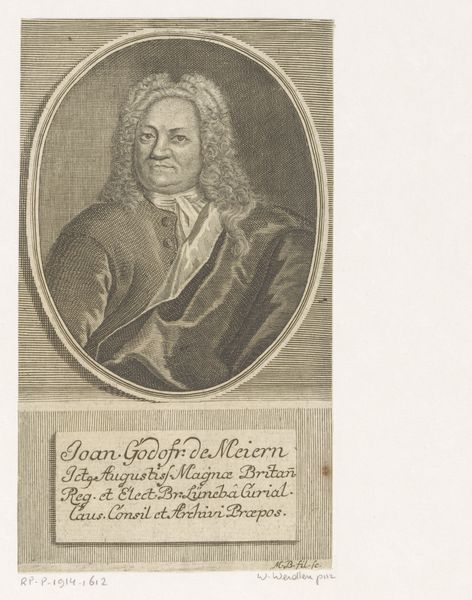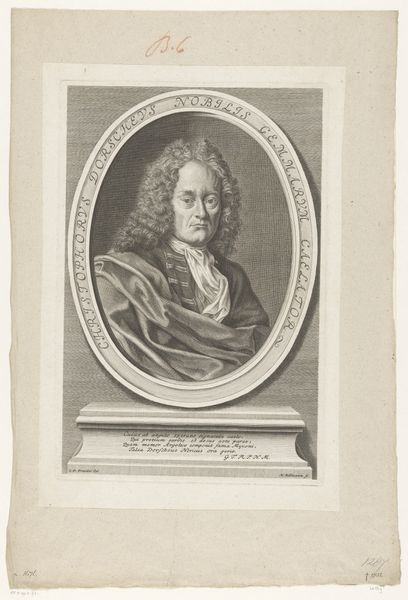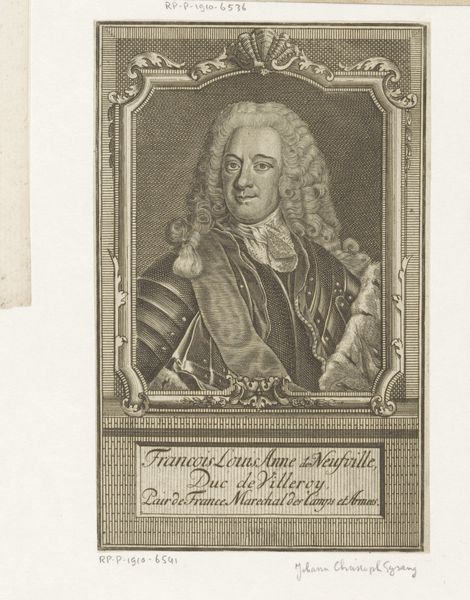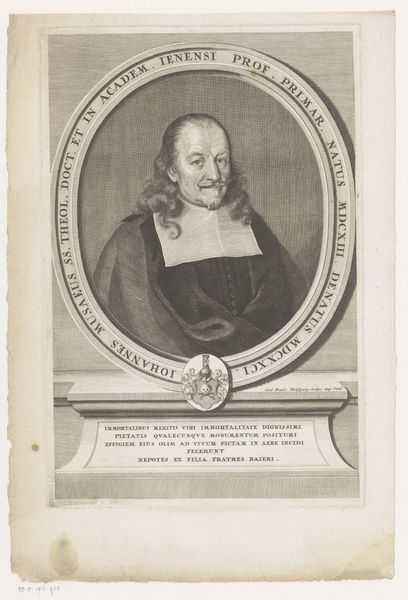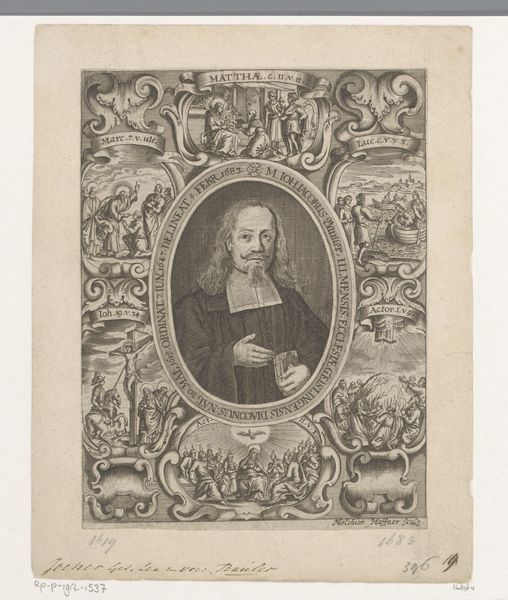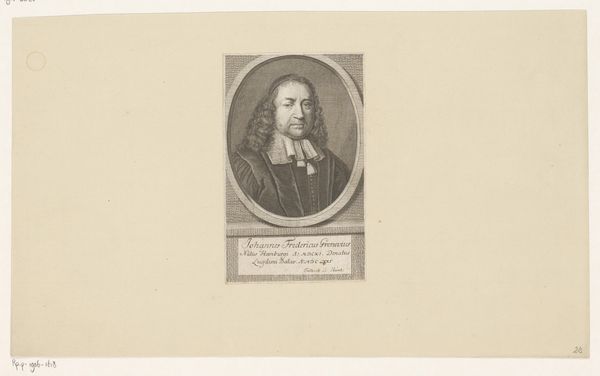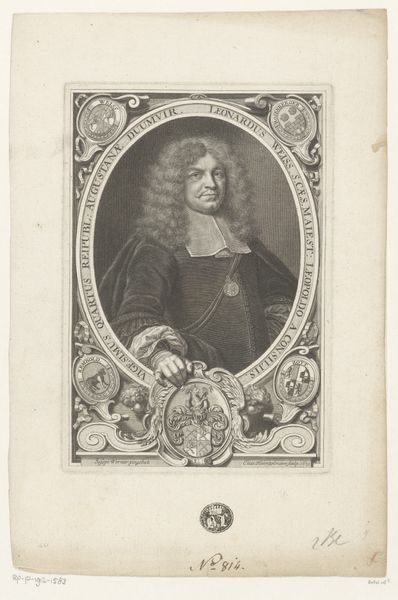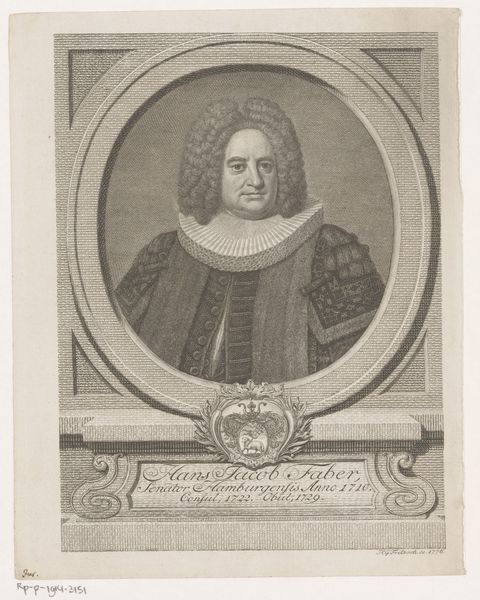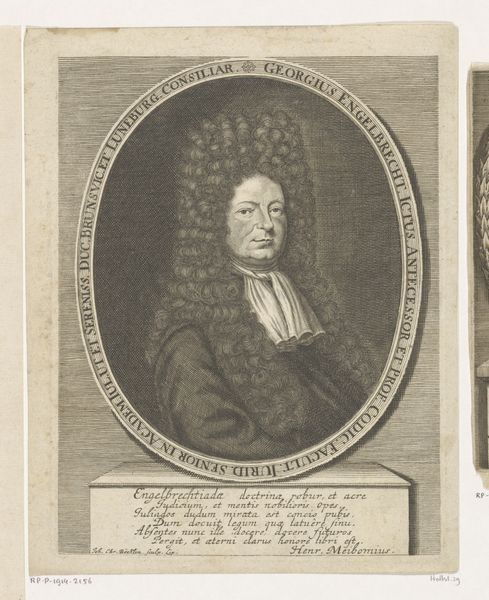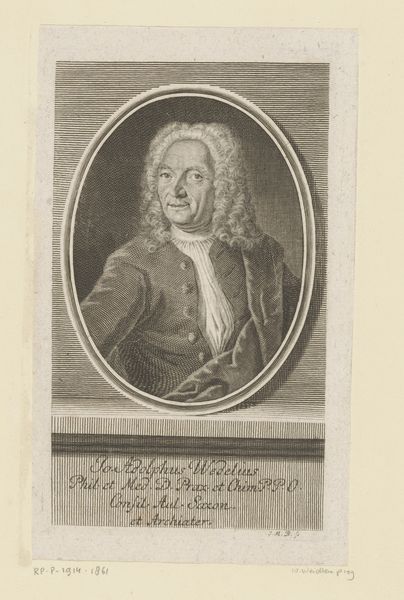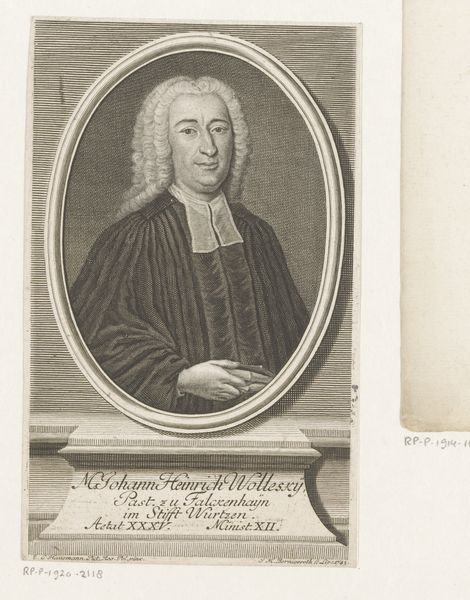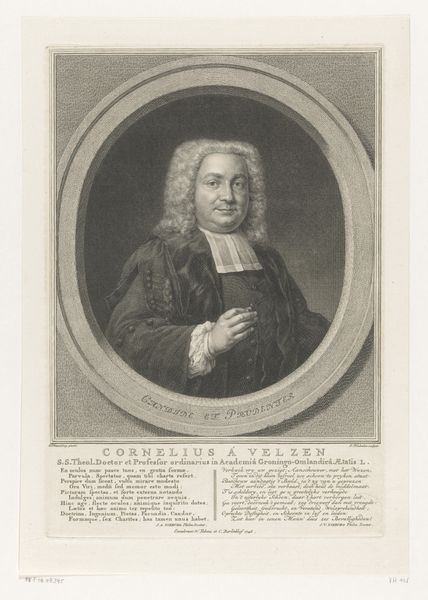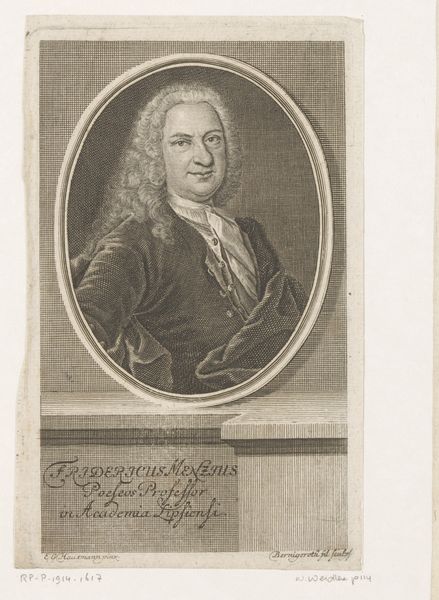
print, engraving
#
portrait
#
aged paper
#
toned paper
#
baroque
# print
#
light coloured
#
old engraving style
#
engraving
Dimensions: height 111 mm, width 70 mm
Copyright: Rijks Museum: Open Domain
Editor: So, here we have Johann Conrad Bodenehr's "Portrait of Veit Riedlin," an engraving from 1668. It's quite small, almost delicate, and has a kind of scholarly somberness to it. What stands out to you? Curator: It's crucial to consider the socio-political context of portraiture at this time. This image isn't just a likeness; it's a construction of power and identity. The very act of commissioning a portrait was a statement. Veit Riedlin was a physician. How might this affect our interpretation of his representation? What does it tell us about his position in society and the values he wanted to project? Editor: Well, being a doctor definitely put him in a privileged position. The details of his clothing, like the quality of his collar and decorative chain, seem intended to signal his status, too. Curator: Precisely! And notice the deliberate framing and the text accompanying his image. The use of Latin immediately places him within a specific intellectual lineage, accessible only to the educated elite. We must question who gets remembered and how. Whose stories are deemed worthy of preservation, and who is excluded from this visual history? Editor: That's a really good point. I hadn’t considered the Latin inscription as a conscious act of exclusion. So, by studying this portrait, we’re not just seeing an individual, but a whole power dynamic at play? Curator: Exactly. We are examining the mechanisms of representation and how they shape our understanding of history. This image provides an entry point to broader questions about social structures, class, and the politics of visual culture in the Baroque era. Editor: Wow, I’ll never look at old portraits the same way again. Thank you. Curator: And I now better appreciate the importance of close looking and considering social standing when discussing the aesthetic of any artwork.
Comments
No comments
Be the first to comment and join the conversation on the ultimate creative platform.
